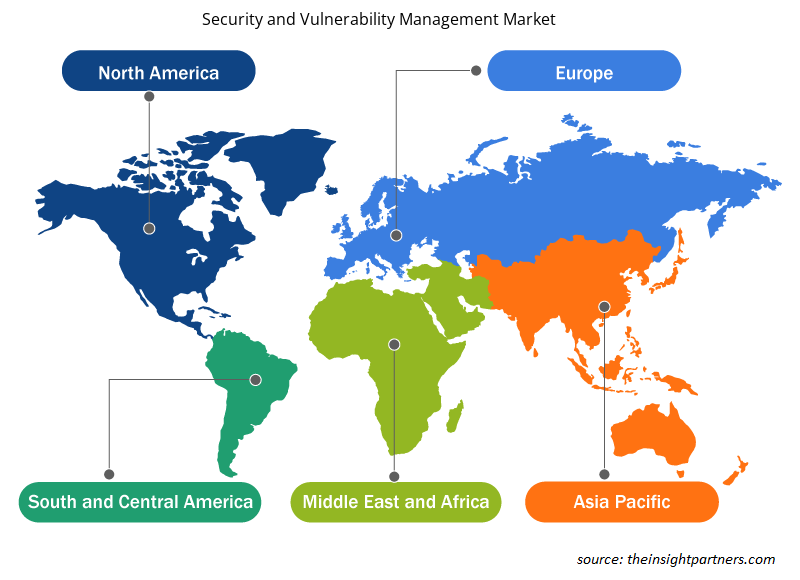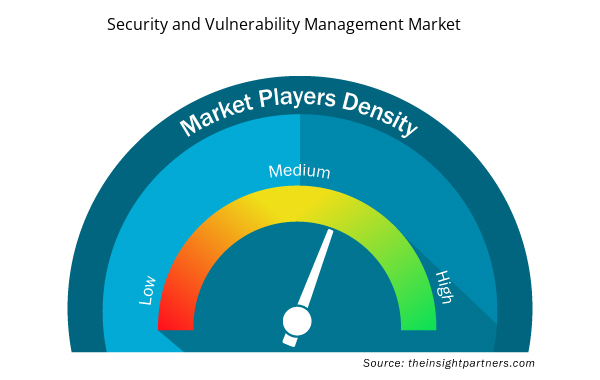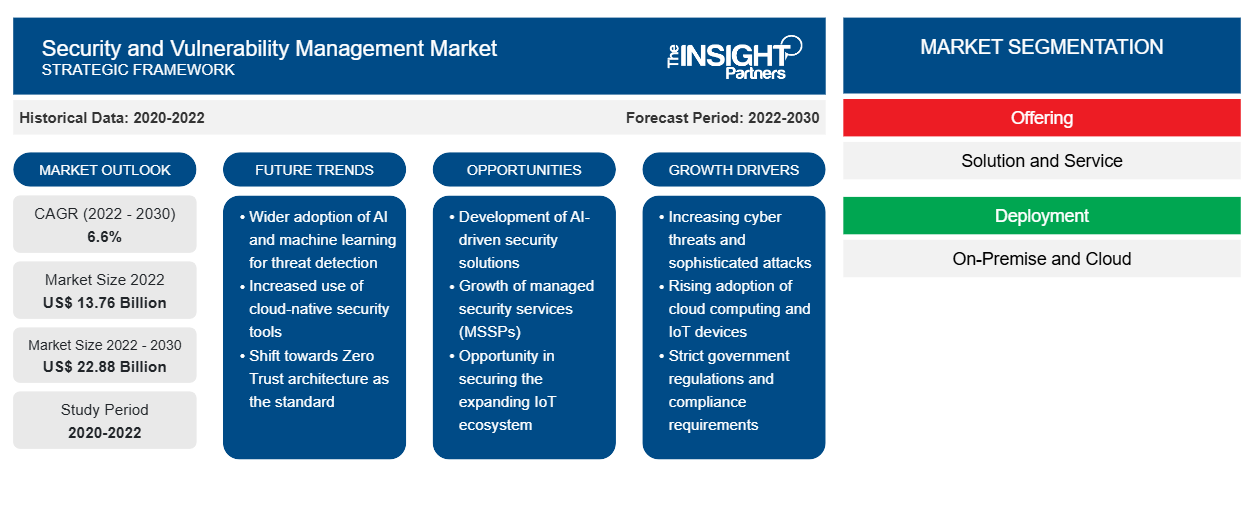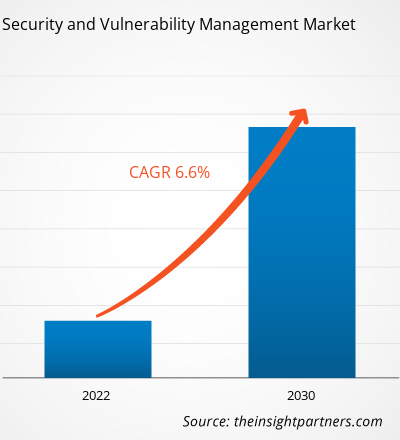[Forschungsbericht] Der Markt für Sicherheit und Schwachstellenmanagement soll von 13,76 Milliarden US-Dollar im Jahr 2022 auf 22,88 Milliarden US-Dollar im Jahr 2030 wachsen; der Markt dürfte von 2022 bis 2030 eine durchschnittliche jährliche Wachstumsrate (CAGR) von 6,6 % verzeichnen.
Analystenperspektive:
Der Bericht enthält Wachstumsaussichten aufgrund der aktuellen Markttrends im Bereich Sicherheit und Schwachstellenmanagement und ihrer vorhersehbaren Auswirkungen während des Prognosezeitraums. Die wachsende Zahl von Cyberangriffen und Datenschutzverletzungen auf der ganzen Welt gehört zu den Faktoren, die den Markt stärken. Wachsende Investitionen in KI-gestützte Lösungen und die Expansion der BFSI- und Gesundheitssektoren dürften den Markt während des Prognosezeitraums weiter ankurbeln. Strenge staatliche Vorschriften in Bezug auf Cybersicherheit und Datenvertraulichkeit kommen dem Markt ebenfalls zugute. Darüber hinaus dürfte die Integration moderner Technologien wie KI, ML, Datenanalysetools und Cloud-Speicher in den kommenden Jahren Wachstumschancen für das Wachstum des Marktes für Sicherheit und Schwachstellenmanagement schaffen.
Marktübersicht:
Sicherheit ist das wertvollste Gut eines Unternehmens und erfordert sowohl Technologie als auch Schulungen. Schwachstellen werden durch Systemfehler verursacht, die zu unbefugtem Zugriff auf private Informationen führen können. Sicherheits- und Schwachstellenmanagement ist der Prozess der Identifizierung, Klassifizierung, Minderung und Behebung von Schwachstellen in Netzwerk-Hardware oder -Software. Wichtige Daten aus der Schwachstellenbewertung werden von Sicherheitsteams verwendet, um Schwachstellen in ihren Netzwerken zu beheben und so die Risikobewertung und Bedrohungsminderung zu erleichtern. Ein Anstieg der Cyberkriminalität und steigende Investitionen in Cybersicherheitsprozesse werden das Wachstum des Sicherheits- und Schwachstellenmanagementmarktes in naher Zukunft wahrscheinlich vorantreiben.
Passen Sie diesen Bericht Ihren Anforderungen an
Sie erhalten kostenlos individuelle Anpassungen an jedem Bericht, einschließlich Teilen dieses Berichts oder einer Analyse auf Länderebene, eines Excel-Datenpakets sowie tolle Angebote und Rabatte für Start-ups und Universitäten.
- Holen Sie sich die wichtigsten Markttrends aus diesem Bericht.Dieses KOSTENLOSE Beispiel umfasst eine Datenanalyse von Markttrends bis hin zu Schätzungen und Prognosen.
Markttreiber für Sicherheit und Schwachstellenmanagement:
Zunehmende Zahl von Cyberangriffen und Datendiebstählen beflügelt den Markt für Sicherheit und Schwachstellenmanagement
Laut einem im Februar 2024 veröffentlichten Bericht der AAG sind 43 % der britischen Unternehmen im Jahr 2022 Cyberangriffen ausgesetzt, was einem Anstieg von ~32 % gegenüber 2020 entspricht. Dies treibt die Nachfrage der Verbraucher nach Sicherheits- und Schwachstellenmanagementlösungen und -diensten zum Schutz sensibler Daten und kritischer Systeme vor Cyberangriffen an. Darüber hinaus werden diese Lösungen auch verwendet, um Schwachstellen zu identifizieren und zu beheben, die den Benutzern helfen, Risiken im Zusammenhang mit Sicherheitsverletzungen zu mindern und sensible Daten und Systeme zu schützen.
Berichtssegmentierung und -umfang:
Die Marktanalyse für Sicherheit und Schwachstellenmanagement wurde unter Berücksichtigung der folgenden Segmente durchgeführt: Angebot, Einsatz und Branche. Basierend auf dem Angebot ist der Markt in Lösungen und Dienste segmentiert. In Bezug auf den Einsatz ist der Markt für Sicherheit und Schwachstellenmanagement in On-Premise und Cloud unterteilt.Auf Branchenbasis ist der Markt in BFSI, IT und Telekommunikation, Einzelhandel und E-Commerce , Gesundheitswesen, Regierung und Versorgungsunternehmen usw. unterteilt. Nach Regionen ist der Markt in Nordamerika, Europa, Asien-Pazifik (APAC), Naher Osten und Afrika (MEA) und Südamerika (SAM) segmentiert.
Segmentanalyse:
Der Markt für Sicherheit und Schwachstellenmanagement ist branchenbezogen in BFSI, IT & Telekommunikation, Einzelhandel und E-Commerce, Gesundheitswesen, Regierung und Versorgungsunternehmen und andere unterteilt. Es wird erwartet, dass das BFSI-Segment im Prognosezeitraum einen bedeutenden Marktanteil im Bereich Sicherheit und Schwachstellenmanagement halten wird. Das prognostizierte Wachstum dieses Segments wird der zunehmenden Digitalisierung und der steigenden Zahl von Cyberangriffen im BFSI-Sektor sowie deren starken Auswirkungen auf die Volkswirtschaften zugeschrieben. Laut Daten des Computer Emergency Response Team (CERT-In) war der Finanzsektor in Indien zwischen Januar und Oktober 2023 über 1,3 Millionen Cyberangriffen ausgesetzt, mit durchschnittlich 4.400 Angriffen pro Tag. Aufgrund der zunehmenden Digitalisierung im Finanzsektor wird Cybersicherheit für Finanzinstitute immer wichtiger, was die Expansion des Marktes für Sicherheit und Schwachstellenmanagement erleichtert. Die Digitalisierung macht es Cyberangreifern leicht, Websites und Transaktionssysteme ins Visier zu nehmen.
Regionale Analyse:
Der geografische Umfang des Marktberichts zu Sicherheit und Schwachstellenmanagement umfasst Nordamerika, Europa, den asiatisch-pazifischen Raum, den Nahen Osten und Afrika sowie Süd- und Mittelamerika. In Bezug auf den Umsatz hatte Nordamerika im Jahr 2022 den größten Marktanteil im Bereich Sicherheit und Schwachstellenmanagement. Wachsende Investitionen in KI-Technologie, ein steigendes Bewusstsein für Cyberbedrohungen, erhebliche Investitionen in Cybersicherheit sowie strenge Regeln und Vorschriften für die Finanzbranche treiben den Markt in dieser Region an. Die Region konzentriert sich stark auf die Einführung umfassender Sicherheitslösungen zum Schutz von Daten vor Cyberbedrohungen. Im Oktober 2023 waren der Ausschuss für auswärtige Angelegenheiten des Repräsentantenhauses und das Ausschuss für Heimatschutz und Regierungsangelegenheiten des Senats einem Cyberangriff vietnamesischer Hacker ausgesetzt, die versuchten, Spyware auf den Telefonen von Journalisten zu installieren. Solche Cyberangriffe lösen bei den Verbrauchern die Nachfrage nach Schwachstellenmanagementlösungen aus, um ihre sensiblen Daten zu schützen. Durch Schwachstellenmanagement können Benutzer ihre Systeme stärken, Daten schützen und Sicherheitsstandards einhalten.
Schlüsselspieleranalyse:
Microsoft Corp; International Business Machines Corp;, Hewlett Packard Enterprise Development LP; Qualys Inc; Tenable Holdings Inc; Rapid7; CrowdStrike Holdings Inc; Fortra, LLC; Skybox Security, Inc; und Cisco Systems Inc gehören zu den wichtigsten Unternehmen, die im Marktbericht zu Sicherheit und Schwachstellenmanagement vorgestellt werden.
Regionale Einblicke in den Markt für Sicherheit und Schwachstellenmanagement
Die regionalen Trends und Faktoren, die den Markt für Sicherheit und Schwachstellenmanagement im gesamten Prognosezeitraum beeinflussen, wurden von den Analysten von Insight Partners ausführlich erläutert. In diesem Abschnitt werden auch Marktsegmente und Geografie für Sicherheit und Schwachstellenmanagement in Nordamerika, Europa, im asiatisch-pazifischen Raum, im Nahen Osten und Afrika sowie in Süd- und Mittelamerika erörtert.

- Erhalten Sie regionale Daten zum Markt für Sicherheit und Schwachstellenmanagement
Umfang des Marktberichts zu Sicherheit und Schwachstellenmanagement
| Berichtsattribut | Details |
|---|---|
| Marktgröße im Jahr 2022 | 13,76 Milliarden US-Dollar |
| Marktgröße bis 2030 | 22,88 Milliarden US-Dollar |
| Globale CAGR (2022 - 2030) | 6,6 % |
| Historische Daten | 2020-2022 |
| Prognosezeitraum | 2022–2030 |
| Abgedeckte Segmente | Durch das Angebot
|
| Abgedeckte Regionen und Länder | Nordamerika
|
| Marktführer und wichtige Unternehmensprofile |
|
Marktteilnehmerdichte: Der Einfluss auf die Geschäftsdynamik
Der Markt für Sicherheits- und Schwachstellenmanagement wächst rasant. Dies wird durch die steigende Nachfrage der Endnutzer aufgrund von Faktoren wie sich entwickelnden Verbraucherpräferenzen, technologischen Fortschritten und einem größeren Bewusstsein für die Vorteile des Produkts vorangetrieben. Mit der steigenden Nachfrage erweitern Unternehmen ihr Angebot, entwickeln Innovationen, um die Bedürfnisse der Verbraucher zu erfüllen, und nutzen neue Trends, was das Marktwachstum weiter ankurbelt.
Die Marktteilnehmerdichte bezieht sich auf die Verteilung der Firmen oder Unternehmen, die in einem bestimmten Markt oder einer bestimmten Branche tätig sind. Sie gibt an, wie viele Wettbewerber (Marktteilnehmer) in einem bestimmten Marktraum im Verhältnis zu seiner Größe oder seinem gesamten Marktwert präsent sind.
Die wichtigsten auf dem Markt für Sicherheit und Schwachstellenmanagement tätigen Unternehmen sind:
- Microsoft Corp
- International Business Machines Corp
- Hewlett Packard Enterprise Development LP
- Qualys Inc
- Tenable Holdings Inc
Haftungsausschluss : Die oben aufgeführten Unternehmen sind nicht in einer bestimmten Reihenfolge aufgeführt.

- Überblick über die wichtigsten Akteure auf dem Markt für Sicherheits- und Schwachstellenmanagement
Aktuelle Entwicklungen:
Die Marktprognose für Sicherheit und Schwachstellenmanagement kann den Beteiligten in diesem Markt bei der Planung ihrer Wachstumsstrategien helfen. Die Marktteilnehmer verfolgen in hohem Maße anorganische und organische Strategien. Einige der jüngsten Schlüsselentwicklungen sind unten aufgeführt:
- Im Oktober 2023 hat BackBox Software Inc. einen Network Vulnerability Manager-Dienst zur Verbesserung der Netzwerkautomatisierung eingeführt. Dieser neue Dienst unterstützt Benutzer bei der Netzwerkautomatisierung und bietet eine umfassende Lösung zur Verwaltung von Schwachstellen in Netzwerkinfrastrukturen.
- Im Oktober 2023 brachte Hackuity die Version 2.0 seiner intelligenten, risikobasierten Schwachstellenmanagementplattform auf den Markt. Version 2.0 ist eine Plattform der nächsten Generation mit wesentlichen Verbesserungen zur Unterstützung von Unternehmen beim Umgang mit Risiken. Die neue Version kombiniert den Schweregrad der Schwachstelle, Bedrohungsinformationen und einen einzigartigen Geschäftskontext und bietet Unternehmen einen messbaren True Risk Score (TRS).
- Im April 2023 startete Google LLC die Initiative Hacking Policy Council, um den Schwachstellenmanagementprozess zu stärken. Der Hacking Policy Council arbeitet mit Intel, Bugcrowd, Intigriti, HackerOne und Luta Security zusammen, um die Praktiken des Schwachstellenmanagements zu verbessern.
- Historische Analyse (2 Jahre), Basisjahr, Prognose (7 Jahre) mit CAGR
- PEST- und SWOT-Analyse
- Marktgröße Wert/Volumen – Global, Regional, Land
- Branche und Wettbewerbsumfeld
- Excel-Datensatz



Report Coverage
Revenue forecast, Company Analysis, Industry landscape, Growth factors, and Trends

Segment Covered
This text is related
to segments covered.

Regional Scope
North America, Europe, Asia Pacific, Middle East & Africa, South & Central America

Country Scope
This text is related
to country scope.
Häufig gestellte Fragen
Solution segment is expected to hold a major market share of security and vulnerability management market in 2022
The security and vulnerability management market is expected to register an incremental growth value of US$ 9.12 billion during the forecast period
The global market size of security and vulnerability management market by 2030 will be around US$ 22.88 billion
Stringent regulatory standards and data privacy compliances are anticipated to play a significant role in the security and vulnerability management market in the coming years.
Asia Pacific is expected to register highest CAGR in the security and vulnerability management market during the forecast period (2022-2030)
The US is expected to hold a major market share of security and vulnerability management market in 2022
Microsoft Corp; International Business Machines Corp; Hewlett Packard Enterprise Development LP; Qualys Inc; Tenable Holdings Inc; Rapid7; CrowdStrike Holdings Inc; Fortra, LLC; Skybox Security, Inc; and Cisco Systems Inc are the key market players expected to hold a major market share of security and vulnerability management market in 2022
Growing investments in AI-enabled solutions and increasing number of cyberattacks and data breaches are the major factors that propel the security and vulnerability management market.
US, China, and Japan are expected to register high growth rate during the forecast period
The estimated global market size for the security and vulnerability management market in 2022 is expected to be around US$ 13.76 billion
Trends and growth analysis reports related to Technology, Media and Telecommunications : READ MORE..
The List of Companies - Security and Vulnerability Management Market
- Microsoft Corp
- International Business Machines Corp
- Hewlett Packard Enterprise Development LP
- Qualys Inc
- Tenable Holdings Inc
- Rapid7
- CrowdStrike Holdings Inc
- Fortra, LLC
- Skybox Security, Inc
- Cisco Systems Inc
The Insight Partners performs research in 4 major stages: Data Collection & Secondary Research, Primary Research, Data Analysis and Data Triangulation & Final Review.
- Data Collection and Secondary Research:
As a market research and consulting firm operating from a decade, we have published and advised several client across the globe. First step for any study will start with an assessment of currently available data and insights from existing reports. Further, historical and current market information is collected from Investor Presentations, Annual Reports, SEC Filings, etc., and other information related to company’s performance and market positioning are gathered from Paid Databases (Factiva, Hoovers, and Reuters) and various other publications available in public domain.
Several associations trade associates, technical forums, institutes, societies and organization are accessed to gain technical as well as market related insights through their publications such as research papers, blogs and press releases related to the studies are referred to get cues about the market. Further, white papers, journals, magazines, and other news articles published in last 3 years are scrutinized and analyzed to understand the current market trends.
- Primary Research:
The primarily interview analysis comprise of data obtained from industry participants interview and answers to survey questions gathered by in-house primary team.
For primary research, interviews are conducted with industry experts/CEOs/Marketing Managers/VPs/Subject Matter Experts from both demand and supply side to get a 360-degree view of the market. The primary team conducts several interviews based on the complexity of the markets to understand the various market trends and dynamics which makes research more credible and precise.
A typical research interview fulfils the following functions:
- Provides first-hand information on the market size, market trends, growth trends, competitive landscape, and outlook
- Validates and strengthens in-house secondary research findings
- Develops the analysis team’s expertise and market understanding
Primary research involves email interactions and telephone interviews for each market, category, segment, and sub-segment across geographies. The participants who typically take part in such a process include, but are not limited to:
- Industry participants: VPs, business development managers, market intelligence managers and national sales managers
- Outside experts: Valuation experts, research analysts and key opinion leaders specializing in the electronics and semiconductor industry.
Below is the breakup of our primary respondents by company, designation, and region:

Once we receive the confirmation from primary research sources or primary respondents, we finalize the base year market estimation and forecast the data as per the macroeconomic and microeconomic factors assessed during data collection.
- Data Analysis:
Once data is validated through both secondary as well as primary respondents, we finalize the market estimations by hypothesis formulation and factor analysis at regional and country level.
- Macro-Economic Factor Analysis:
We analyse macroeconomic indicators such the gross domestic product (GDP), increase in the demand for goods and services across industries, technological advancement, regional economic growth, governmental policies, the influence of COVID-19, PEST analysis, and other aspects. This analysis aids in setting benchmarks for various nations/regions and approximating market splits. Additionally, the general trend of the aforementioned components aid in determining the market's development possibilities.
- Country Level Data:
Various factors that are especially aligned to the country are taken into account to determine the market size for a certain area and country, including the presence of vendors, such as headquarters and offices, the country's GDP, demand patterns, and industry growth. To comprehend the market dynamics for the nation, a number of growth variables, inhibitors, application areas, and current market trends are researched. The aforementioned elements aid in determining the country's overall market's growth potential.
- Company Profile:
The “Table of Contents” is formulated by listing and analyzing more than 25 - 30 companies operating in the market ecosystem across geographies. However, we profile only 10 companies as a standard practice in our syndicate reports. These 10 companies comprise leading, emerging, and regional players. Nonetheless, our analysis is not restricted to the 10 listed companies, we also analyze other companies present in the market to develop a holistic view and understand the prevailing trends. The “Company Profiles” section in the report covers key facts, business description, products & services, financial information, SWOT analysis, and key developments. The financial information presented is extracted from the annual reports and official documents of the publicly listed companies. Upon collecting the information for the sections of respective companies, we verify them via various primary sources and then compile the data in respective company profiles. The company level information helps us in deriving the base number as well as in forecasting the market size.
- Developing Base Number:
Aggregation of sales statistics (2020-2022) and macro-economic factor, and other secondary and primary research insights are utilized to arrive at base number and related market shares for 2022. The data gaps are identified in this step and relevant market data is analyzed, collected from paid primary interviews or databases. On finalizing the base year market size, forecasts are developed on the basis of macro-economic, industry and market growth factors and company level analysis.
- Data Triangulation and Final Review:
The market findings and base year market size calculations are validated from supply as well as demand side. Demand side validations are based on macro-economic factor analysis and benchmarks for respective regions and countries. In case of supply side validations, revenues of major companies are estimated (in case not available) based on industry benchmark, approximate number of employees, product portfolio, and primary interviews revenues are gathered. Further revenue from target product/service segment is assessed to avoid overshooting of market statistics. In case of heavy deviations between supply and demand side values, all thes steps are repeated to achieve synchronization.
We follow an iterative model, wherein we share our research findings with Subject Matter Experts (SME’s) and Key Opinion Leaders (KOLs) until consensus view of the market is not formulated – this model negates any drastic deviation in the opinions of experts. Only validated and universally acceptable research findings are quoted in our reports.
We have important check points that we use to validate our research findings – which we call – data triangulation, where we validate the information, we generate from secondary sources with primary interviews and then we re-validate with our internal data bases and Subject matter experts. This comprehensive model enables us to deliver high quality, reliable data in shortest possible time.


 Holen Sie sich ein kostenloses Muster für diesen Bericht
Holen Sie sich ein kostenloses Muster für diesen Bericht